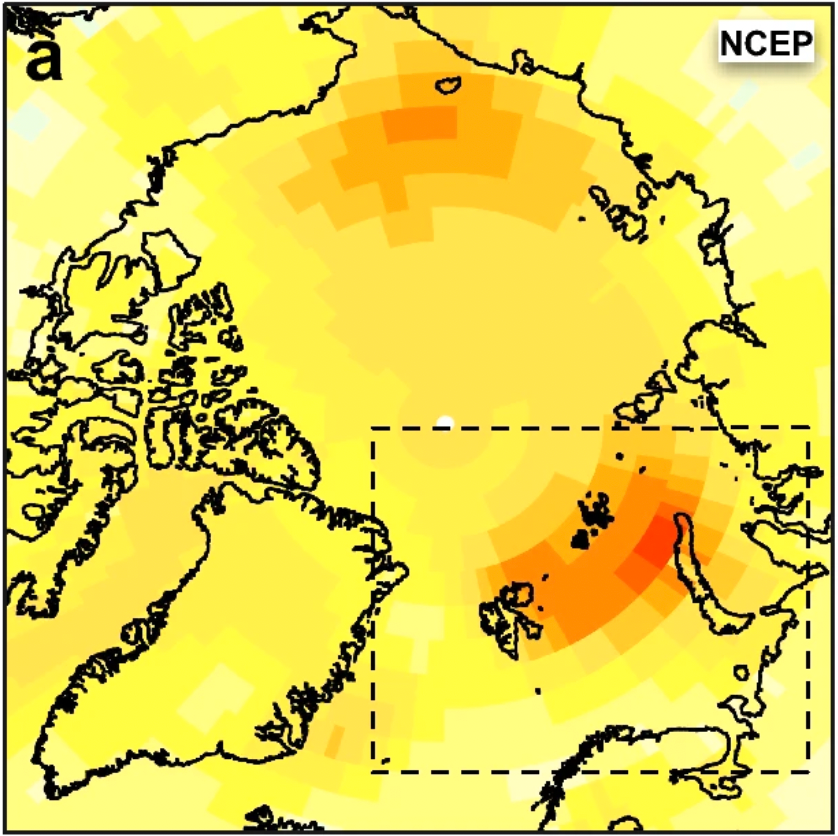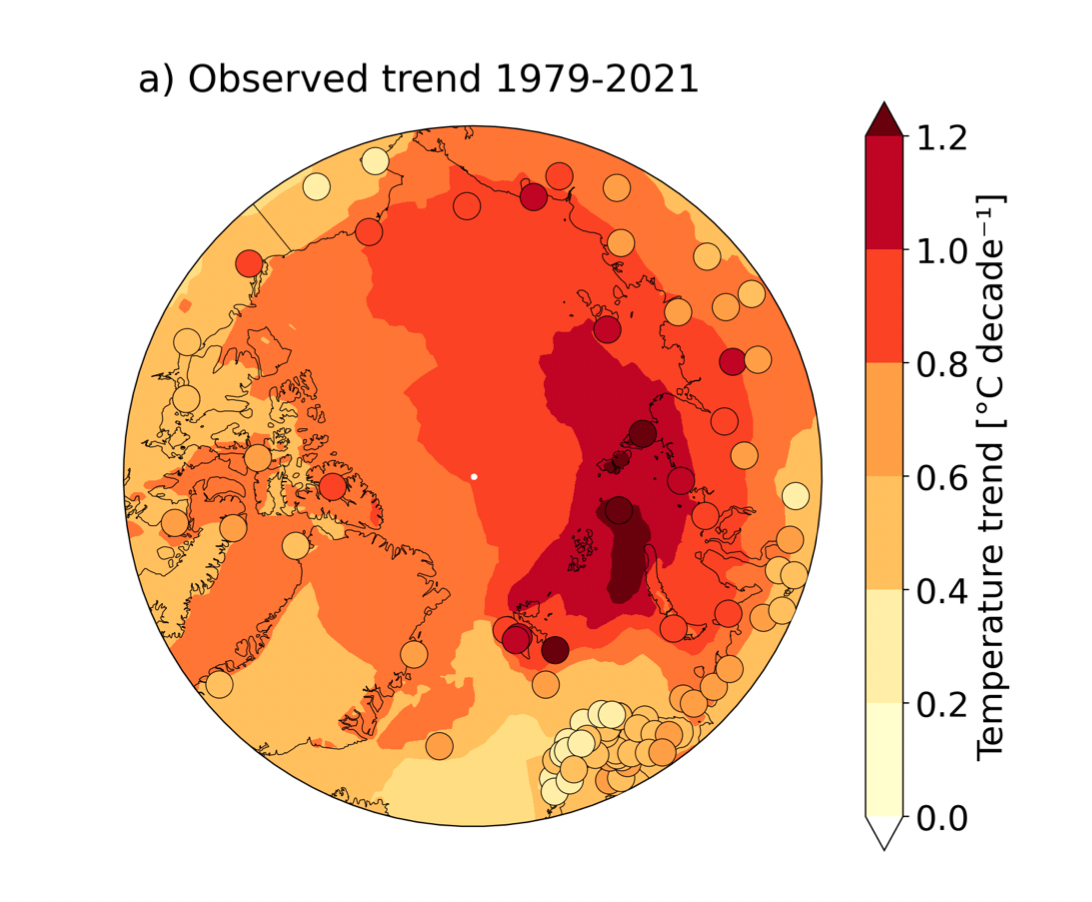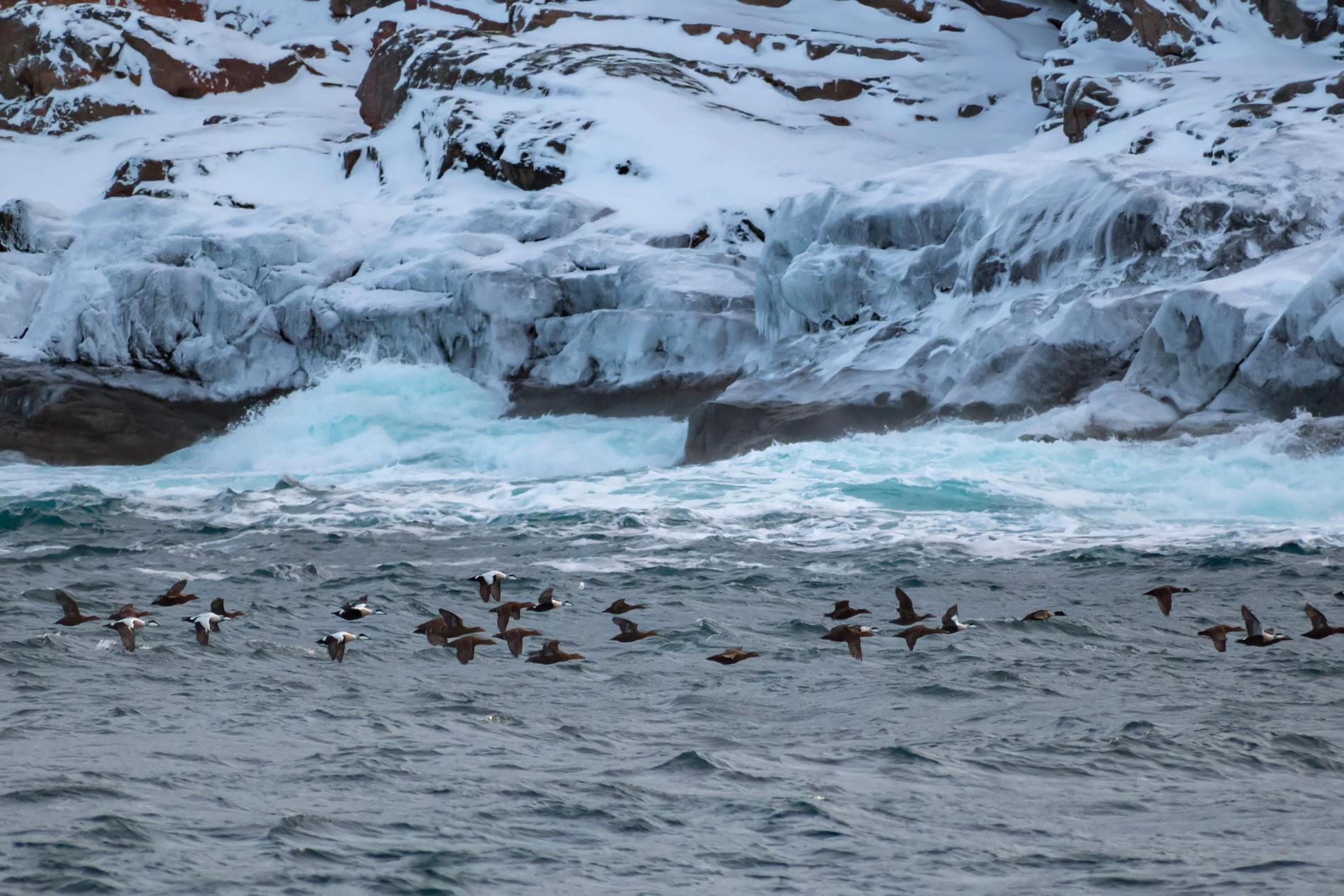
Jonathan Jeppsson
Eerie warning from the red field
Published: Less than 3 hours ago
This is a commenting text. Analysis and positions are the writer's.
COLUMNISTS
What is really going on in the Barents Sea?
New reports show that warming in some places in the Arctic is seven
times more powerful than the global average.
An unexpected bright red field on the map foreshadows an unpleasant
development.
"Shocking", "crazy", "extreme".
The researchers have not shied away from using the heaviest adjectives
when describing developments in the Arctic in recent years.
At the same time, plans are being made for new oil fields in the Barents
Sea, which Aftonbladet's Staffan Lindberg and Peter Wixtröm talk about
in a big report today.
During the summer, two new reports came out that confirmed what many
climate scientists had known - the warming in the Arctic is going much
faster than previously expected.
A couple of years ago, it was widely accepted that the Arctic was
warming twice as fast as the global average. That was bad enough.
But during the summer, two new reports came out that showed that warming
is four times faster in the Arctic. And it doesn't stop there – in a
particular area of the Barents Sea, the warming is seven times faster
than the average for the planet.

The warming over some areas of the Arctic is up to seven times more
powerful than the global average.
Four degrees per decade
It glows red on the map – the numbers are breathtaking: In some places
in the Barents Sea, the warming is 2.7 degrees per decade. In autumn
even worse – up to four degrees per decade.
The warming is most powerful around the Frans Josefs Land and Novaya
Zemlya archipelago east of Svalbard.
One result of the rapid Arctic warming is the melting of the Greenland
ice sheet, which contributes to sea level rise. During the summer, new
research emerged that the melting in Greenland - which could not be
stopped even if the world stopped emitting greenhouse gases - leads to
an inevitable sea level rise of 30 cm.(en oundviklig havsnivåhöjning på 30 cm.)
Acidification increases
There are more signs that something is not right in the Arctic. A study
came out this week that the acidification of the western Arctic Ocean is
happening three to four times faster than in the rest of the world's
oceans.
The oceans, which absorb a third of all carbon dioxide in the
atmosphere, are becoming increasingly acidic due to the burning of
fossil fuels, but in the Arctic in particular it is accelerating the
most.
"We were shocked to see acidification happening three to four times
faster," said one of the researchers.

In some places in the Barents Sea, the warming is 2.7 degrees per
decade.
Two reasons for the phenomenon
But what is it then that makes the warming around Frans Josefs Land so
extreme?
The main reason has been shown to be the reduced extent of the ice cover
during the winter months. But it has also been shown that changes in
atmospheric circulation play a role.
It indicates that a possible natural climate variation interacts with
warming as a result of increased emissions of greenhouse gases. But the
main reason is still considered to be the reduction of sea ice.
It is an unpleasant warning of what is to come.
Although the extent of the ice has not hit any record lows in recent
years, there is a deeply worrying trend – the thickness of the sea ice
in summer has decreased by almost 65 procent since the 1970s.
Some scientists talk about the Arctic summer ice being in a death
spiral, that it is only a matter of time before we reach what they call a
"blue ocean event"-
when the ice largely melts away completely during the summer months.
But when can this happen? In the past, it has been talked about around
the middle of the century, but there are also reports that it could
happen as early as a decade from now.
Regardless of when it happens, we then enter a new reality - when all
the solar radiation that today is reflected away by the ice is instead
absorbed by the sea.
The red field is a warning of what is to come - more and more extreme weather events, significantly worse than those we see today.

Barents Sea in the Arctic. Photo: Getty
Inga kommentarer:
Skicka en kommentar